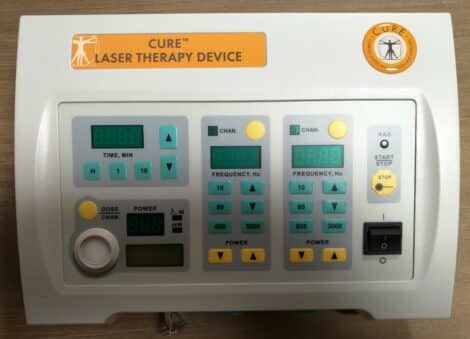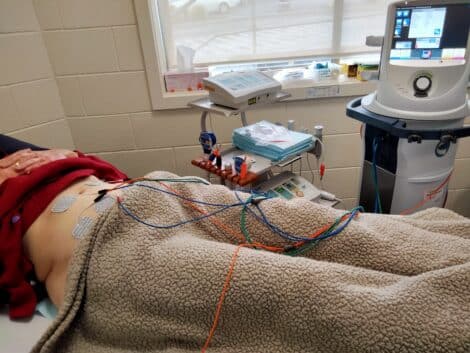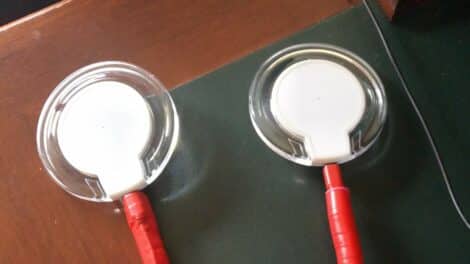Photo reference: Incontinence. CURE approach. Photo by Serguei Kisselev in April 2020.
As we know incontinence is a multifactorial problem. Normally we can divide it into two types – Stress and Urge incontinence. But most commonly it is a mixed condition. What causes it? Unfortunately, that cannot be answered clearly. It could be as simple as age related loss of pelvic and core muscle tone, or due to a history of damage of pelvic structures or other underlying chronic conditions causing a loss of bladder innervation control. It could be a permanent loss of bladder muscle tone – “atonic bladder” or the opposite – an uncontrolled increase of the muscle tone causing “spastic bladder”.
Current CURE strategy for incontinence includes simultaneous use of the following:

- Photobiomodulation (formerly Low-Level Laser Therapy) with the aim to improve pelvic microcirculation in combination with Non-invasive Laser Blood illumination which is known to increase delivery of oxygen to tissues by up to 25%.
 Core and pelvic muscle “retraining” electrostimulation – can improve muscle strength and tone of both skeletal and bladder muscles by up to 40% in a short period of time – 10-15 procedures and the achieved effect could last 3-6 months or even longer, especially if the patient regularly performs exercises with a focus on pelvic floor and core muscles.
Core and pelvic muscle “retraining” electrostimulation – can improve muscle strength and tone of both skeletal and bladder muscles by up to 40% in a short period of time – 10-15 procedures and the achieved effect could last 3-6 months or even longer, especially if the patient regularly performs exercises with a focus on pelvic floor and core muscles.
 Millimetric Wave stimulation with the aim to restore autonomic nerve regulation, both symphatic and parasymphatic. Depending on the settings, this type of the transcutaneous stimulation effectively restores the function of both types of nerve fibers and assists to regain the neurogenic bladder control.
Millimetric Wave stimulation with the aim to restore autonomic nerve regulation, both symphatic and parasymphatic. Depending on the settings, this type of the transcutaneous stimulation effectively restores the function of both types of nerve fibers and assists to regain the neurogenic bladder control.
To be honest, it took time to develop the above strategy. The above combination appeared to be the most effective, which is reflected in our statistical data.
Of course, nothing in this world is permanent and forever. With time people started to notice an eventual decline in their bladder control, especially if nothing had been done to maintain the achieved result. Th prevent or minimise the decline, we recommend to repeat the course of the CURE management every 3-6 months. Most of the time, when the situation is stable and no obvious worsening of the situation is noted, only five or so sessions are required, but sometimes patients may need to repeat the whole course to regain control.
Also, we noticed an interesting phenomenon – few patients had no major benefit after the initial course of therapy, some of them had not noticed a very big improvement even after the second course, but most of them had a significant benefit only after the third course. It seems a reasonable explanation for this happening is due to the nature of these courses, which work due to an accumulative effect over time.
Unfortunately, there is a group of patients who we were not able to be helped. Considering the total number of the patients – this group is not very big, but obviously we feel that something was missed in our understanding of this very important medical and social problem. Obviously, we will continue in the development of the method and eventually, the number of the disappointed patients will be reduced.
